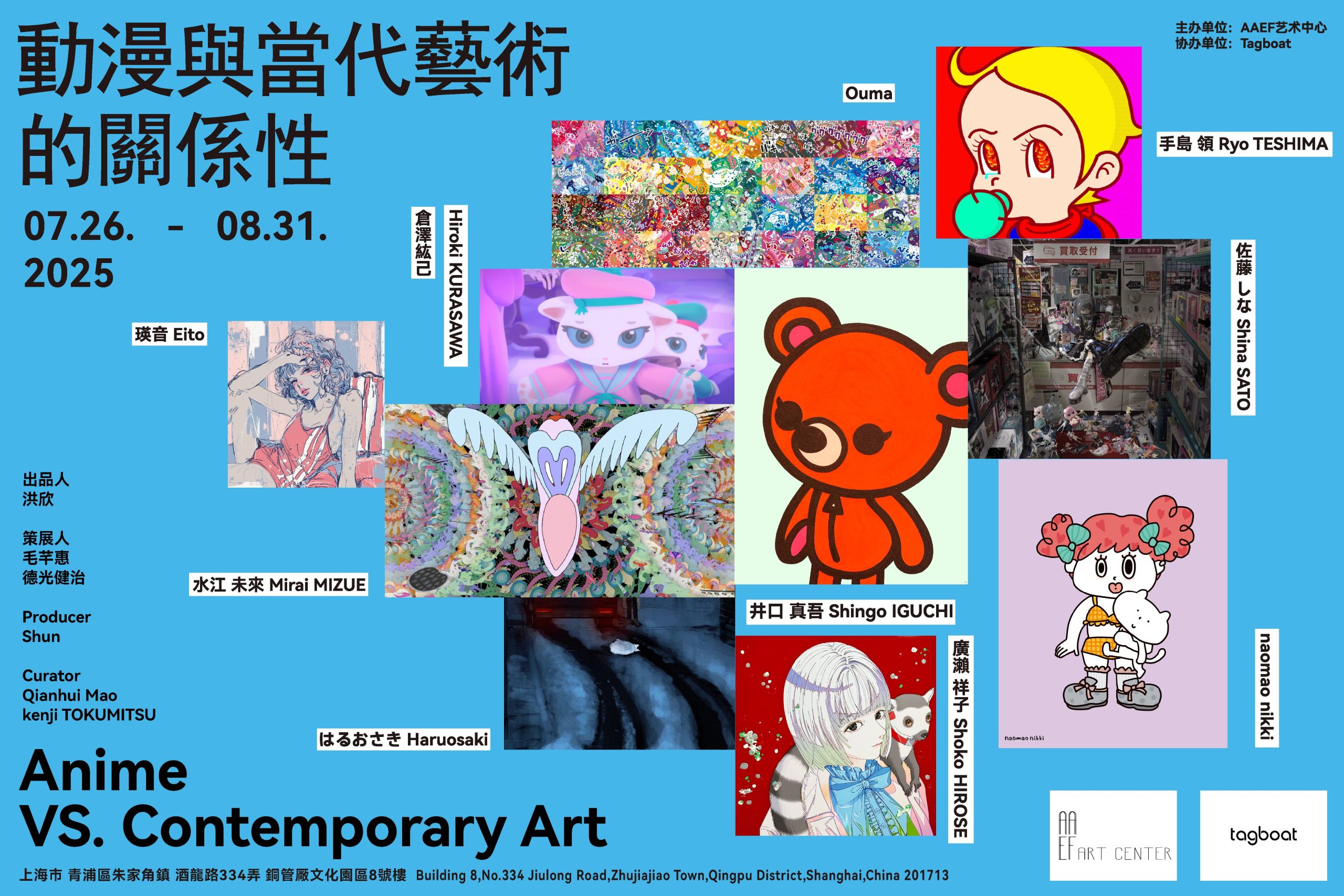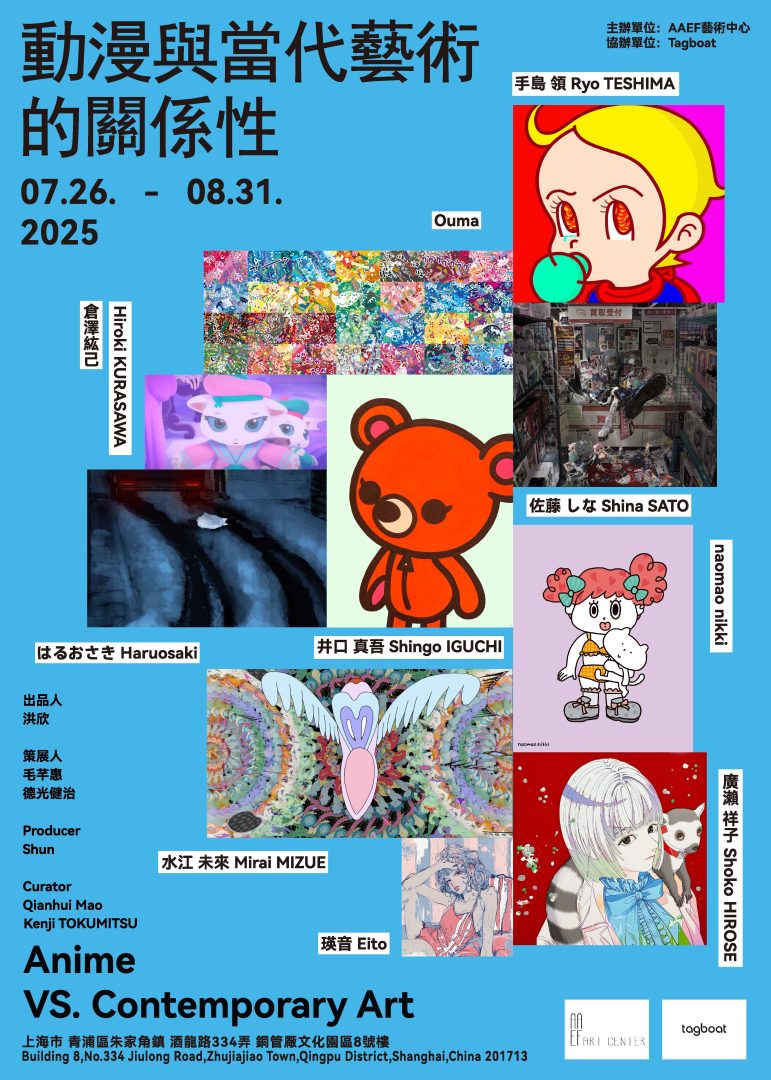In Japan, “manga,” “anime,” and “illustration” have long been classified as “subcultural” forms. Yet these media transcend mere entertainment: they embody rich narrative complexity, exceptional formal beauty, and incisive social critique, carving a distinctive artistic terrain. This exhibition invites a reappraisal of these Japanese pop-cultural expressions, positioning and re-evaluating them firmly within the field of contemporary art.
Takashi Murakami’s Superflat concept elevated otaku culture to contemporary art, gaining international acclaim. Similarly, illustrators like Hiroshi Nagai and Hisashi Eguchi have transcended commercial illustration; their works—anchored in pure formal power and sensitive design—have moved them ever closer to the essence of fine art. Even earlier, Tadanori Yokoo bridged pop art and Japanese mass culture, cementing global influence.
In other words, Japanese “manga,” “anime,” and “illustration” have always held profound artistic potential. Their elevation to contemporary art represents a historically logical and natural progression.
Yet in Japan today, biases against “manga,” “anime,” and “illustration” persist. The compartmentalization within art, illustration, and animation circles—this disciplinary fragmentation—hinders the due recognition of these mediums. This disciplinary fragmentation is a key reason why Japan’s domestic art market remains significantly smaller than international standards—a barrier this exhibition is determined to overcome.
Our goal is to dismantle these barriers and demonstrate how “manga,” “anime,” and “illustration” can transform into contemporary art. The selected artists each navigate between pop cultural symbolism and artistic essence in unique ways:
Shoko HIROSE explores the decontextualization and reincarnation of virtual characters like Hatsune Miku in contemporary art through her series “Life in a ‘PARALLEL’ World”, merging digital outputs with hand-applied processing. Her proposed “cyclic creative methodology bridging digital and physical realms” constitutes a pioneering endeavor to discover new possibilities for modern art within virtual-physical interstices.
Eito constructs decorative patterns through dense accumulations of points and lines, elevating the Superflat aesthetics of animation style to new aesthetic apotheosis. Within his practice, the intervention of digital media constitutes not merely a technique, but an imperative process of deconstructing and reconstituting visual language.
Ryo TESHIMA, through the neon-mixed-media “BABYBOY,” allegorizes the tension between war and life. He wields cuteness to awaken emotion while addressing serious social issues—an emblem of the fusion of “kawaii culture” and dystopian critique.
Shingo IGUCHI centers narratives around “Z CHAN,” weaving Zen metaphysics into virtual realms. His practice dissolves binaries of reality/fantasy and spirit/matter, concealing ontological investigations beneath the kawaii facade.
Shina SATO uses delicate hand-drawn imagery filtered through a feminine and youthful lens to narrate modern loneliness and hope, Through this manga-style narrative structure, she elevates intimate insights into individual existence into the realm of contemporary art.
Ouma orchestrates cellular motifs in immersive installations, transmuting personal trauma into communal catharsis. This metamorphosis from graphic memoir to biological allegory compels viewers to contemplate biopolitical existence.
naomao nikki interrogating kawaii’s dual ontology—as artistic lexicon and consumerist currency—through “naomao” installations. Viewer responses of “cuteness” unmask complicity between desire, societal apparatus, and gender norms.
Mirai MIZUE’s animation ETERNITY fuses abstract visuals with music to depict the cosmic cycle of birth, expansion, death, and rebirth. Its pulsing colors and shapes evoke the very breath of the universe—a visual narrative that transcends language and reverberates within the viewer’s inner cosmos.
This exhibition specially features works by Tokyo University of the Arts animation graduates—はるおさき Haruosaki and Hiroki KURASAWA. Imbued with the artistic legacy of Studio Ghibli and Disney since childhood, they represent a generation culturally forged through animated narratives. Their visual works, synthesizing profound narrative insight with masterful visual expression, testify vividly to animation’s evolution from entertainment medium to legitimate art form.
By including both painted and installation works, as well as animation screenings, this exhibition provides a multifaceted presentation of the artistic complexity inherent in Japanese subculture. Though these artists vary in their aesthetics and approaches, they are united in a shared mission: to elevate subculture into contemporary art. Their dynamic interactions and intersections make this exhibition not merely a showcase of styles, but the inception of a new Japanese contemporary art movement.


